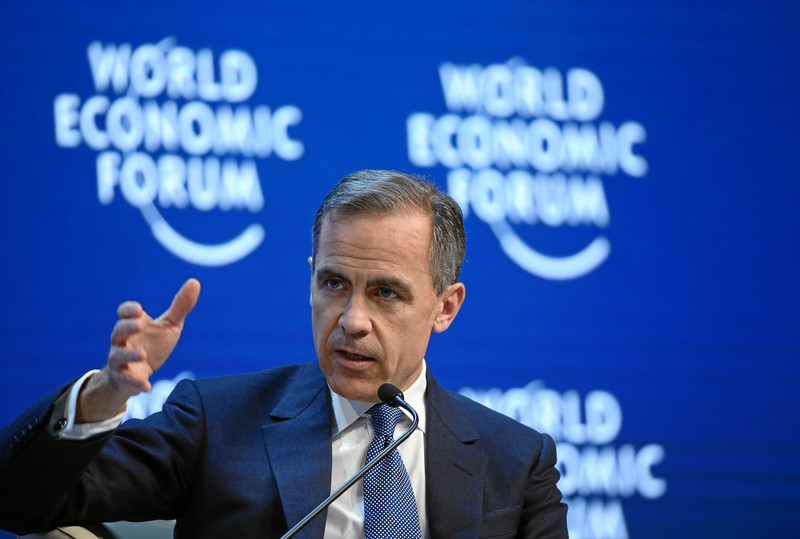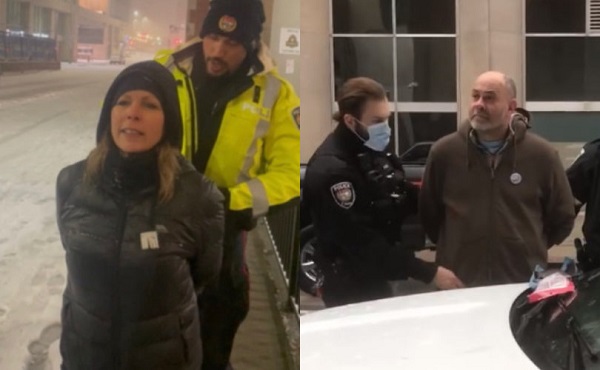Alberta
MGM, HBO, CBS, Paramount and other studios all working in Alberta right now!

Film credit attracts productions worth nearly $1B
A key part of Alberta’s Recovery Plan, the Film and Television Tax Credit is attracting major productions to the province, diversifying the economy and creating thousands of new jobs.
Since the program’s launch in January 2020, it has attracted 50 productions to Alberta with total production costs of $955 million, creating 9,000 new direct and indirect jobs in the province.
In March 2021, Alberta’s government removed the $10-million per-project cap from the Film and Television Tax Credit to make the province an even more desirable location for larger productions.
Cameras are rolling on film and television productions across Alberta, injecting hundreds of millions of dollars in investment into the economy as these productions hire local crews, actors and extras, and use local businesses.
The Film and Television Tax Credit, combined with Alberta’s competitive tax environment, affordable labour costs and breathtaking scenery, has made the province a prime choice for medium and big-budget television and film projects that have a positive impact on Alberta’s economy.
HBO is currently filming its new television series The Last of Us in Alberta. The project is the single largest television series production in Canadian history and is expected to create thousands of jobs.
“The boom in our film industry is the perfect example of Alberta’s Recovery Plan in action. Thanks to the Film and Television Tax Credit, and our recent improvements to it, we are witnessing a new billion-dollar industry take shape right before our eyes, further diversifying the economy and creating new jobs.”
Jason Kenney, Premier
“Alberta is the new Hollywood. With our stunning landscapes, our immense talent and our world-class studios, our province is being showcased on the big screen in a way that it never has before, with thousands of jobs being created in everything from carpentry to catering.”
Doug Schweitzer, Minister of Jobs, Economy and Innovation
“Film productions like The Last of Us and Ghostbusters mean thousands of new jobs for rural Albertans both on and off set. With landscapes from the Rocky Mountains to the Prairies, Alberta is becoming a global hub for film. New multimillion-dollar investments in the film industry are getting Albertans back to work and driving Alberta’s economic recovery. I look forward to seeing even more of Alberta on the big screen.”
Nate Horner, Associate Minister of Rural Economic Development
“From breathtaking landscapes to a skilled and growing workforce, Alberta has much to offer the global production community. The province’s enhanced film and television production incentive has also made it an especially attractive destination for HBO. We look forward to filming The Last of Us here, and to working with talented Alberta crews.”
Jay Roewe, senior vice-president, Production & Incentives, HBO
“Alberta’s Film and Television Tax Credit is a game-changer in terms of production volumes. It has created thousands of well-paying jobs and numerous business opportunities. High-profile projects such as The Last of Us are a major driver of jobs, Alberta businesses and training. Projects like this benefit numerous industries ranging from fabric suppliers to companies in the hospitality industry. Alberta’s spectacular landscapes are being shared globally, elevating our economic standing in the global marketplace.”
Damian Petti, president, IATSE Local 212
“We are pleased to see the Alberta government is supporting Alberta’s creative industries by their recent enhancements of our film and television tax credits and production incentives. From actors to puppeteers to stunt performers, this is fantastic news for ACTRA Alberta performers, our production community and Alberta’s economy.”
Tina Alford, branch representative, ACTRA Alberta
“Alberta’s enhanced incentive program and strong commitment to increasing investment from global studios is working to grow the creative economy and provide unparalleled opportunities for Alberta’s creative talent. On behalf of the major studios we represent, we’re thrilled that the Alberta government and industry have worked together to create jobs for thousands of skilled Albertans in front of and behind the camera, and to showcase the beauty and talent of Alberta on the global stage.”
Wendy Noss, president, MPA-Canada
“HBO is synonymous with quality and The Last of Us has long been touted as one of the most cinematic video game series ever created – a perfect marriage to Alberta’s cinematic landscapes, light and picturesque communities. We are grateful to have this tentpole series in the province developing the industry and creating hundreds of jobs for our hard-working and talented crews, as well as a great economic stimulus in communities of southern Alberta. This project, along with enhancements of the Alberta Film and Television Tax Credit, will be looked back on as cornerstone moments in a booming film production sector for years to come.”
Brock Skretting, head of advocacy, Keep Alberta Rolling
“The changes to Alberta’s Film and Television Tax credit can only be seen as a success story. Not only are we creating good high-paying jobs for Albertans, but it is also an important step in boosting Alberta’s economy at time when we need it. No matter what the business is – gas stations, lumberyard, coffee shop – movie money is being spent in Alberta.”
Mike Dunphy, business agent, Teamsters Local 362
Quick facts
- Alberta’s Film and Television Tax Credit, launched in January 2020, offers a refundable Alberta tax credit certificate on eligible Alberta production and labour costs to corporations that produce films, television series and other eligible screen-based productions in the province.
- The Film and Television Tax Credit complements the Alberta Made Production Grant, and is part of the government’s commitment to grow Alberta’s cultural industries by 25 per cent over the next decade.
- In 2019, combined consumer spend globally for theatrical and home entertainment reached $101 billion, a 34 per cent increase since 2015.
- The film and television industry is experiencing significant growth nationally and globally.
- Global spending in the industry is projected to reach about $113 billion by 2022.
- It is expected more than $50 billion of that spending will be in North America.
- Last year, the Canadian film and television industry was valued at $3 billion and employed more than 54,000 workers.
- Every year, Alberta graduates more than 3,000 creative industry professionals from its post-secondary institutions.
- According to industry estimates, more than 3,200 Albertans are employed in the province’s motion picture and video industry.
- According to Statistics Canada data:
- Every $1 million of production activity in the screen-based production sector creates about 13 Alberta jobs.
- Every $1 million of government investment under the Film and Television Tax Credit program is expected to support about 85 Alberta jobs.
- The budget for the Film and Television Tax Credit in 2021-22 is $50 million.
Related information
Alberta
Big win for Alberta and Canada: Statement from Premier Smith

Premier Danielle Smith issued the following statement on the April 2, 2025 U.S. tariff announcement:
“Today was an important win for Canada and Alberta, as it appears the United States has decided to uphold the majority of the free trade agreement (CUSMA) between our two nations. It also appears this will continue to be the case until after the Canadian federal election has concluded and the newly elected Canadian government is able to renegotiate CUSMA with the U.S. administration.
“This is precisely what I have been advocating for from the U.S. administration for months.
“It means that the majority of goods sold into the United States from Canada will have no tariffs applied to them, including zero per cent tariffs on energy, minerals, agricultural products, uranium, seafood, potash and host of other Canadian goods.
“There is still work to be done, of course. Unfortunately, tariffs previously announced by the United States on Canadian automobiles, steel and aluminum have not been removed. The efforts of premiers and the federal government should therefore shift towards removing or significantly reducing these remaining tariffs as we go forward and ensuring affected workers across Canada are generously supported until the situation is resolved.
“I again call on all involved in our national advocacy efforts to focus on diplomacy and persuasion while avoiding unnecessary escalation. Clearly, this strategy has been the most effective to this point.
“As it appears the worst of this tariff dispute is behind us (though there is still work to be done), it is my sincere hope that we, as Canadians, can abandon the disastrous policies that have made Canada vulnerable to and overly dependent on the United States, fast-track national resource corridors, get out of the way of provincial resource development and turn our country into an independent economic juggernaut and energy superpower.”
Alberta
Energy sector will fuel Alberta economy and Canada’s exports for many years to come

From the Fraser Institute
By any measure, Alberta is an energy powerhouse—within Canada, but also on a global scale. In 2023, it produced 85 per cent of Canada’s oil and three-fifths of the country’s natural gas. Most of Canada’s oil reserves are in Alberta, along with a majority of natural gas reserves. Alberta is the beating heart of the Canadian energy economy. And energy, in turn, accounts for one-quarter of Canada’s international exports.
Consider some key facts about the province’s energy landscape, as noted in the Alberta Energy Regulator’s (AER) 2023 annual report. Oil and natural gas production continued to rise (on a volume basis) in 2023, on the heels of steady increases over the preceding half decade. However, the dollar value of Alberta’s oil and gas production fell in 2023, as the surging prices recorded in 2022 following Russia’s invasion of Ukraine retreated. Capital spending in the province’s energy sector reached $30 billion in 2023, making it the leading driver of private-sector investment. And completion of the Trans Mountain pipeline expansion project has opened new offshore export avenues for Canada’s oil industry and should boost Alberta’s energy production and exports going forward.
In a world striving to address climate change, Alberta’s hydrocarbon-heavy energy sector faces challenges. At some point, the world may start to consume less oil and, later, less natural gas (in absolute terms). But such “peak” consumption hasn’t arrived yet, nor does it appear imminent. While the demand for certain refined petroleum products is trending down in some advanced economies, particularly in Europe, we should take a broader global perspective when assessing energy demand and supply trends.
Looking at the worldwide picture, Goldman Sachs’ 2024 global energy forecast predicts that “oil usage will increase through 2034” thanks to strong demand in emerging markets and growing production of petrochemicals that depend on oil as the principal feedstock. Global demand for natural gas (including LNG) will also continue to increase, particularly since natural gas is the least carbon-intensive fossil fuel and more of it is being traded in the form of liquefied natural gas (LNG).
Against this backdrop, there are reasons to be optimistic about the prospects for Alberta’s energy sector, particularly if the federal government dials back some of the economically destructive energy and climate policies adopted by the last government. According to the AER’s “base case” forecast, overall energy output will expand over the next 10 years. Oilsands output is projected to grow modestly; natural gas production will also rise, in part due to greater demand for Alberta’s upstream gas from LNG operators in British Columbia.
The AER’s forecast also points to a positive trajectory for capital spending across the province’s energy sector. The agency sees annual investment rising from almost $30 billion to $40 billion by 2033. Most of this takes place in the oil and gas industry, but “emerging” energy resources and projects aimed at climate mitigation are expected to represent a bigger slice of energy-related capital spending going forward.
Like many other oil and gas producing jurisdictions, Alberta must navigate the bumpy journey to a lower-carbon future. But the world is set to remain dependent on fossil fuels for decades to come. This suggests the energy sector will continue to underpin not only the Alberta economy but also Canada’s export portfolio for the foreseeable future.
-

 2025 Federal Election24 hours ago
2025 Federal Election24 hours agoPoilievre To Create ‘Canada First’ National Energy Corridor
-

 International1 day ago
International1 day agoFREE MARINE LE PEN!’: Trump defends French populist against ‘lawfare’ charges
-

 Energy2 days ago
Energy2 days agoTrump Takes More Action To Get Government Out Of LNG’s Way
-

 Health2 days ago
Health2 days agoSelective reporting on measles outbreaks is a globalist smear campaign against Trump administration.
-

 2025 Federal Election2 days ago
2025 Federal Election2 days agoMainstream Media Election Coverage: If the Election Was a NHL Game, the Ice Would be Constantly Tilted Up and to the Left
-

 2025 Federal Election2 days ago
2025 Federal Election2 days agoMark Carney is trying to market globalism as a ‘Canadian value.’ Will it work?
-

 Automotive1 day ago
Automotive1 day agoDark Web Tesla Doxxers Used Widely-Popular Parking App Data To Find Targets, Analysis Shows
-

 COVID-1919 hours ago
COVID-1919 hours agoMaxime Bernier slams Freedom Convoy leaders’ guilty verdict, calls Canada’s justice system ‘corrupt’







